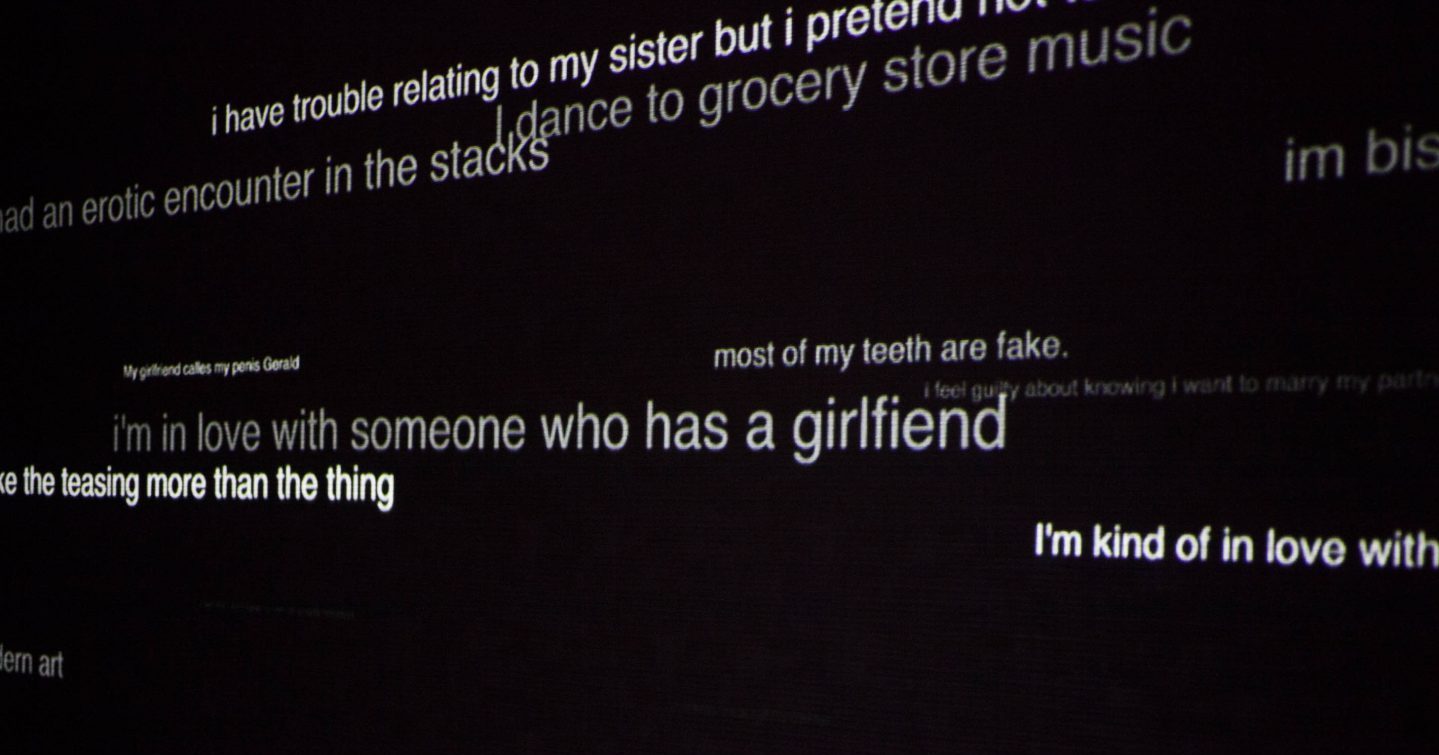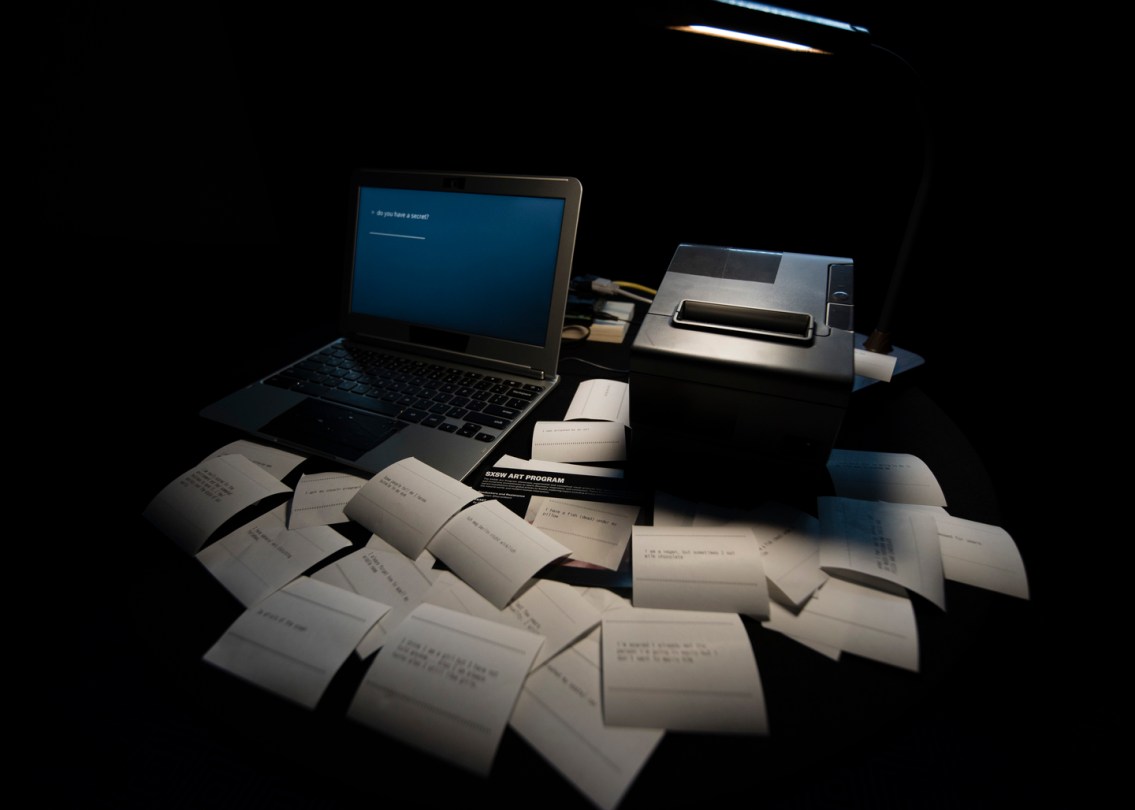What is social media if not a giant, accidental time capsule that collects our not-well-kept secrets? And what kind of light will it cast upon us — both individually and collectively — in, say, 50 to 100 years?
Digital artist Sarah Newman set out to explore these questions and collaborated with colleagues from metaLAB at Harvard (part of Harvard University’s Berkman Klein Center for Internet & Society). Together with creative technologist Jessica Yurkofsky and data scientist Rachel Kalmar, with Newman in the role of lead artist, the team created the dynamic art installation “The Future of Secrets,” which has been shown at eight sites around the globe since 2016, including SXSW 2018.
“I think we’re in an unusual time right now because the repercussions of the effects of the technology have not caught up to the convenience of using the technology...”
According to Newman, the exhibit grew out of “a longer term interest that I had with what happens to our digital correspondence in the long-term future — like, where do our emails go? That wasn’t about secrets per se, it was about what happens to these corpuses of data, personal information that we’re putting out into the world… It’s really a chance for us to learn about ourselves now. It’s using the future and the future of technology as a foil to think about the present.”
As the concept evolved, Newman did surveys where she asked her subjects whether, if given the chance, they’d want to read their great-grandparents’ emails, and conversely, if they’d want their great-grandchildren to have access to their own. Not surprisingly, there often was a discrepancy in the responses.




